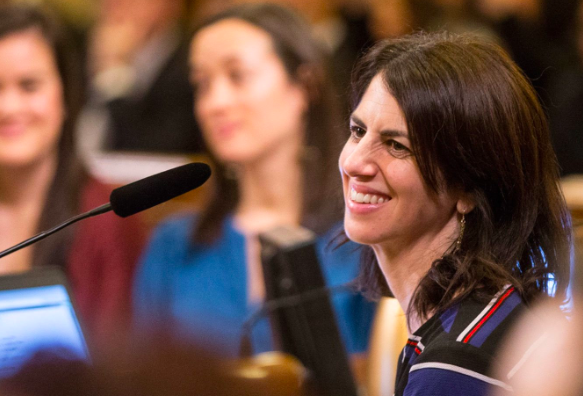There may be more than 1,000 residential properties in San Francisco that have unsafe gas lines that could lead to devastating fires – and the Department of Building Inspection doesn’t even know where they are and has no plans to find out.
That’s what came out of an extraordinary hearing at the Land Use and Transportation Committee today.

The hearing focused on information exposed by Joe Eskenazi at MissionLocal indicating that the city and builders, in their push to upgrade “soft-story” building to higher seismic safety standards, may have buried a bunch of gas lines inside concrete slabs.
That, the story notes, could be a serious problem: In an earthquake, the concrete could shake and possibly crack – and tear the gas line at the same time.
From Eskenazi’s story:
The ramifications here are chilling. Or, more correctly, burning: Steve Panelli, the Department of Building Inspection’s chief plumbing inspector, told the structural subcommittee [in 2017] that this situation was “unsafe” and a “life-safety issue.”
“These are high-pressure lines,” he continued. “It could become, it could become … ”
Panelli’s Building Department colleague David Leung finished the thought for him.
“It could become a San Bruno.”
Panelli concurred. “If one little leak happened and something happened here — it becomes catastrophic now. … It snowballs.”
The soft-story program mandates that buildings with several floors above, say, a garage, be upgraded; during the Loma Prieta quake, dozens of buildings that had unreinforced first floors collapsed.
Everyone agrees that it’s been a great success on one level – more than 5,000 property owners have done the upgrades.
But according to DBI officials who testified today, in at least a third of those cases (we’re talking maybe 1,500 buildings) the upgrades involved pouring a horizontal concrete beam at the ground level – and sometimes that meant moving a gas line through the concrete.
At this point, the story gets a little technical – and weird.
Under questioning from Sup. Hillary Ronen, DBI officials said that the Building Code requires those pipes to be in a “sleeve” – typically a PVC pipe that gives the pipe an inch or so clearance on either side to move around in a quake.
But the code also allows “other authorized” protections, which might be a “wrap,” which might be made out of material that would prevent cracking, but might not be – and nobody really knows which systems are where.
And since DBI decides what is “authorized,” and the code is totally vague, then inspectors don’t enforce rules on what some experts say are critical safety measures.
PG&E officials say the sleeve is the only safe system. An expert from Santa Clara, Douglas Hansen, said that “wrapping” a pipe in some sort of protective material – and there are no rules on what it should be — often doesn’t protect it from the problems you get when you bury it in concrete.
But it turns out that in San Francisco, the contractor and the structural engineer doing the work decided what system to use, and there’s no rule that the engineer even visit the site, and – this left Ronen stunned – there is nothing in any report, anywhere, that tracks whether the proper system was used.
“How do we know if the pipeline was sleeved or wrapped?” she asked.
The answer: We don’t.
What is DBI going to do now to go back and see if there are serious safety issues?
Nothing.
Part of the issue here is the weird jurisdiction issues between the city and PG&E.
The private company owns, operates, and is responsible for the gas mains, and the lines that connect them to the meters in houses. After the meter, all gas lines are under the jurisdiction of DBI.
But the infrastructure in this city is pretty old, so in some houses, the meter in inside, say, a garage – so after a seismic upgrade, the gas line that passes through the concrete beam would be pre-meter, and thus – DBI says – out of their jurisdiction.
That means the only “building inspection” for those sleeves, or wraps, or maybe nothing, comes from PG&E. Builders, Eskenazi notes, often avoid PG&E because the company takes so long to get to a site.
So they just pour concrete, and maybe it’s safe and maybe it isn’t. And the city doesn’t even know.
PG&E, at least, seems interested in going back to check on the lines in its jurisdiction – maybe, if it was notified in the first place that construction was happening.
DBI, Ronen confirmed, has no such plans at all.
This, I think any reasonable person would acknowledge, is a serious problem.




